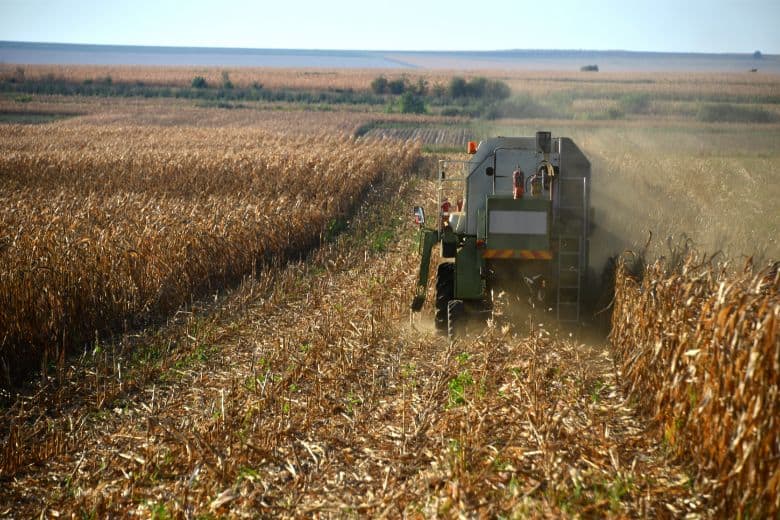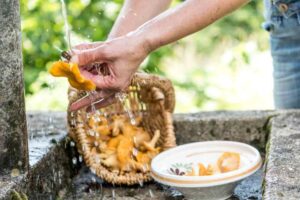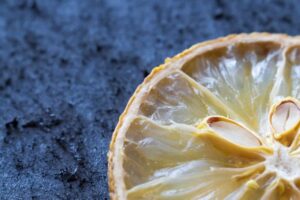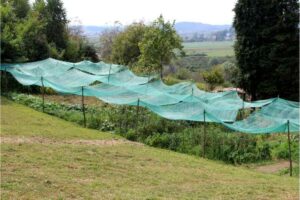
Harvesting corn without a combine is indeed a challenging task, but it is possible. In that case, you must have the right tools and knowledge about how to do the job correctly. The main crucial step is to determine when the corn is ready for harvest.
Although this will depend on the variety of corn, it is generally ready when the leaves begin to yellow. Therefore, the kernels are plump and dry. The next step is to use a sharp knife or corn cutter to cut the ears off the stalk.
After the ears of corn are cut off, they must be husked and dried before they can be stored. This can be done by spreading the ears out in the sun or in a well-ventilated area. Once the corn is dry, it can be stored in a cool, dry place for up to a year. With the right tools and knowledge, it is possible to harvest corn without a combine.
Let’s see more details.
The list of Necessary Supplies
Here is the list of basic necessary supplies to harvest corn by hand without using a combine harvester:
1. Sharp corn knives or corn cutters – You’ll need knives or blades to cut the corn stalks from the plants below the ear. Reusable corn knives or disposable corn cutters both work.
2. Container for harvested ears – Bring buckets, bags, or baskets to collect the ears of corn as you cut them from the stalks.
3. Gloves – Wearing gloves will protect your hands as you cut and collect corn.
4. Pruners or scissors – Pruners or scissors allow you to easily cut the husks and silk from the ears after harvesting.
5. Corn shuckers – Shuckers make quick work of removing husks and silk from the ears. You can also shuck by hand.
6. Twine or string – Tie the husked ears together in bundles using twine or string for easier handling and transport.
7. Ladder – For taller corn varieties, you may need a ladder to reach the ears at the top of the stalks.
8. Wagon or cart – Use a utility wagon or cart to haul the buckets or bundles of harvested corn from the field to your storage area.
9. Coolers – Place harvested ears in coolers filled with water or damp burlap to keep them fresh if not shelling right away.
Proper knives, safety gear, and containers are essential for an efficient hand-harvesting process without machinery. Planning your workspace and operations also helps speed up the labour.
Prepare the Field
Preparing a field for harvesting corn without a combine involves several steps to ensure a smooth and efficient process.
Here are some tips for preparing the field to harvest corn by hand without a combine:
Step 1: Wait until the corn is fully mature and dry. It should be at or below 20% moisture content for safe storage.
Step 2:Walk through the field and inspect the ears. They should be loose on the cob and kernels hard. The husk should be dry.
Step 3: Wear gloves for protection. Position a bucket or basket near the base of the corn stalk.
Step 4: Now clear away foliage, weeds, or debris from between rows so you have clear access.
Step 5: Make sure the rows are straight and well-spaced for easy walking and reaching the ears.
Step 6: Use a sharp corn knife to cut the ear off the stalk about 2-3 inches below the ear. Try to keep the husk intact.
Step 7: Place the harvested ears gently in your collection container, being careful not to damage them.
Step 8:Continue cutting ears row by row, working your way down the field in an orderly manner.
Step 9: When ready to husk, remove the husk and silk strands by hand or with a corn shucker tool.
Step 10:Tie husked ears together in bunches using twine for transport to storage.
Step 11:Transport ears in ventilated containers to continue drying. Spread out ears on tarps or in barns for final drying if needed.
Step 12: Shell corn from the cob once kernels are below 15% moisture. Winnow to remove the chaff.
Step 13:Store shelled corn in breathable containers at proper moisture levels to prevent spoilage.
Extra Tips:
- Remove lower corn stalks and foliage down to about waist height for visibility and less clutter.
- Let the field dry out if there is recent rain. Minimize soil compaction by waiting for drier conditions.
- Stage harvest equipment and supplies near the field for easy access during hand picking.
- Use markers to identify plots or sections to facilitate orderly harvesting row by row.
- Consider harvesting ears from the outside rows first to reduce interference along field edges.
- Work in teams with clear communication to cover the field efficiently without missing spots.
- Harvest during dry, sunny periods if possible to minimize chances of spoilage before storage.
Going row by row and working methodically helps maximize yield when harvesting corn by hand without rushing the process. Proper drying is important for long-term storage. Proper field prep makes the manual harvesting process more organized and reduces the chances of losing ears or creating messiness in the field.
How to Cut the Cornstalks
Let’s see the proper cutting technique for cornstalks when harvesting them by hand without a combine:
# Use a sharp corn knife or cutters specifically designed for cutting corn. Dull blades will crush or damage the ears.
# Cut the stalk approximately 2-4 inches below the ear. Cutting too high risks damaging the ear, too low leaves excess stalk.
# Make a clean, smooth cut through the stalk. Sawing or crushing the stalk can cause husk damage.
# Cut stalks uniformly to maintain an organized look to the field post-harvest.
# Work from the outside rows inward to minimize walking through harvested areas.
# Cut in an upward motion with the blade for better control and safety. Downward cuts risk injury if you slip.
# Carry cut stalks upright to the collection container to keep ears elevated and away from dirt.
# Cut individual stalks or entire plants all at once, depending on variety and maturity. Dent corn is cut individually.
# Make cuts at a consistent height to speed up future harvesting tasks like husking or mechanical chopping of stalks.
# Store and sharpen knives frequently to maintain clean, easy cuts through the season.
All of these benefits help to keep your garden looking its best. Moreover, cutting the cornstalks helps to promote new growth. This can help to keep the garden looking fresh and inviting throughout the growing season. All in all, cutting the cornstalks is a simple task that can have numerous benefits for your garden.
How to Store the Corn Ears
Here are some key points on how to properly store corn ears after harvesting by hand:
Drying – Fully dry the ears down to 15% moisture or less before storage. Spread in a single layer to dry for 1-2 weeks, stirring daily.
Breathable containers – Store dried ears in mesh bags, woven bins, or cribs that allow air circulation. Avoid airtight containers.
Temperature – Maintain a cool temperature between 40-50°F in the storage area. Higher temps can cause mold.
Humidity – Keep humidity below 15% to prevent re-absorption of moisture. Rotating stock helps.
Off the floor – Elevate containers a few inches up to prevent moisture issues.
Accessible – Place storage in an accessible building like a barn for monitoring and easy removal of ears throughout the season.
Pests – Check weekly for signs of insects and properly dispose of any infected ears.
First in, first out – Practice FIFO (first in, first out) rotation to prevent spoilage of older crops.
Shell before long term – Only shell corn for long-term grain storage once moisture is below 13%.
Proper drying, ventilation, temperature/humidity control and rotation are keys to safely storing corn ears for months after hand harvesting.
Conclusion
Harvesting corn without a combine is possible, but it is a labour-intensive process. To harvest corn without a combine, you must first cut the cornstalks at the base. Then, you have to strip the ears of corn from the stalks manually. Finally, you need to shell the ears of corn and collect the kernels. Although harvesting corn without a combine is much more time-consuming, it can be done with the right tools and techniques.






One Comment